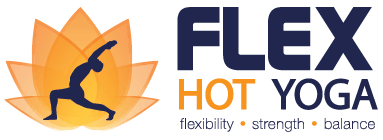Posture of the month: Utthita Hasta Padangustasana
With balance and your head held high…
This May, we will practice Utthita Hasta Padangustasana - a pose that initially looks easier than most of our Postures of the Month, but requires a tremendous amount of focus and balance.
In Sanskrit, the ancient language of the yogis, Utthita Hasta Padangustasana means 'Extended Hand to Big Toe Posture', from Utthita (extended), Hasta (hand), Pada (foot), Angustha (thumb or toe) and Asana (seat or posture).
Keep reading to hear about its benefits, both on a physical level and subtly, when it comes to your breath…
The benefits of practicing Utthita Hasta Padangustasana
Whilst some of the most ancient images of yogis show them deep in meditation, standing on one leg, this posture isn’t a classic one, and its roots in the yoga community can only be traced back to the 1920s. It requires flexible hamstrings, the ability to truly open your hips, and a steady balance. More so, to practice it you need to be able to stay focused, find inner stillness and breathe deeply and calmly.
Pigeon pose variations are great preliminary postures t work towards the splits
Improves your overall posture and balance: To be able to stretch your body upwards and sidewards while standing on one leg, you need to activate, coordinate and balance several different muscle groups.
Lengthens your spine: To maintain balance, you extend your spine upwards, whilst activating your abs and opening up your chest. You simultaneously lengthen your spine and keep your hips square, to achieve a stable stance.
Strengthens your hamstrings, quadriceps and calves
Improves hip flexibility: Practicing Utthita Hasta Padangusthasana will help your hips gain flexibility. You can start by stretching your leg straight forwards and continue to open up further sideways over time.
Opens the chest and the shoulders: Whilst stretching our your arm to hold your big toe, your chest needs to open wide by raising your rib cage and flexing your shoulders. Make sure to maintain the tension in your shoulders as you open them, to keep ears and arms aligned.
Activates your joints: From your shoulders to elbows, wrists, fingers, hips, knees, ankles and toes … all joints have to be activated to practice Utthita Hasta Padangusthasana. This can go as far as providing some relief for people who suffer from rheumatic disorder.
Stability through focus and breath
To practice Utthita Hasta Padangusthasana, you need to find inner steadiness and balance - a calm equilibrium both on a physical and a mental plane. To do so, this posture relies on two components: unwavering focus and calm, even breath:
To be 100% focused, plant your gaze firmly on a drishti (focal) point. Whether that’s a nail in the wall, the upper corner of a door, or another unmoving spot - make sure your eyes stay there and don’t move. This point will anchor you as you lift your leg and adjust your balance. Like anywhere in life, a steady, single pointed focus brings stability and calmness.
When it comes to your breath, make sure to keep if smooth and even, thereby stabilising the posture and evenly circulating prana within your body. Avoid heavy heaving of the chest - this might easily de-stabilise your stance. Instead, engage your lower abdominal area and anchor your breath deep in your lower belly. Adam Bornstein* comments: “Because of this, the breath will naturally want to flow more through the side ribs and chest. The result is a feeling of being uplifted and invigorated.”
So are you ready to not only touch your toes but perfect your Utthita Hasta Padangustasana? Then come along to Flex regularly and practice with us! There are over 25 classes/week, and we will practice Utthita Hasta Padangustasana daily during all of May 2022!
Our gratitude for their wisdom this month goes to tummee.com and Adam Bornstein for his insightful article.




